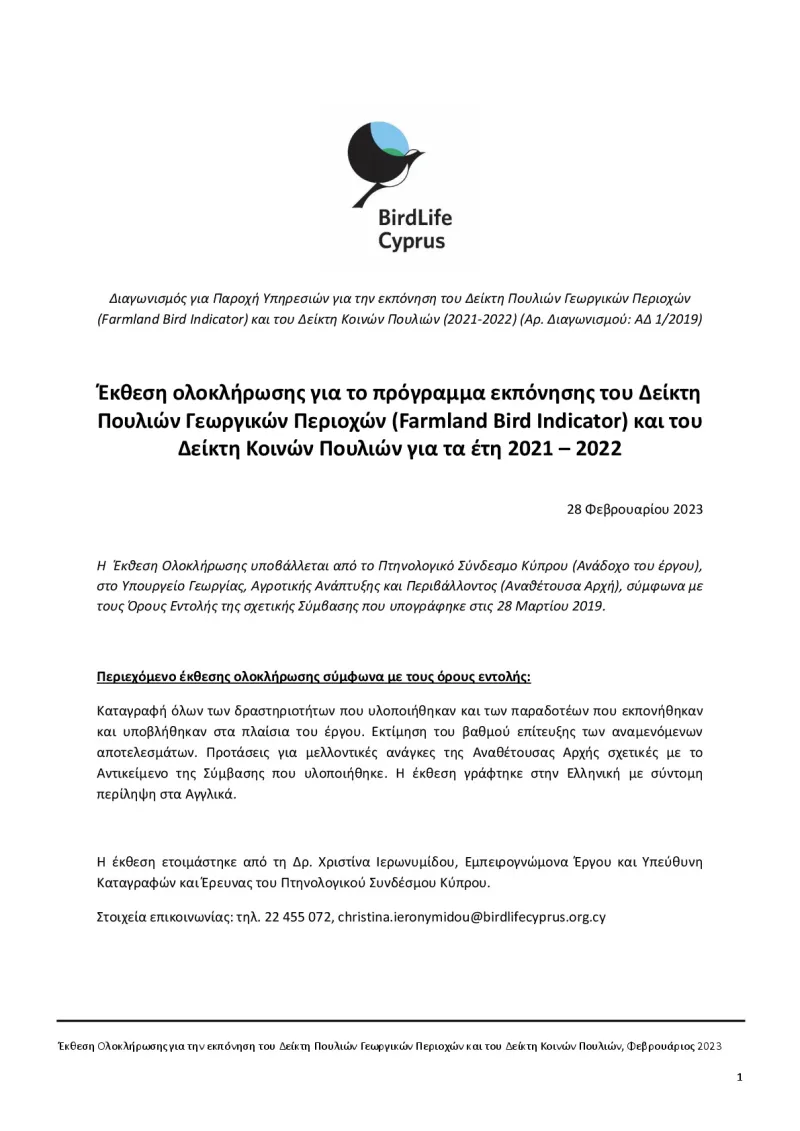Final report on the Farmland Bird Indicator (FBI) and Common Bird Index
The report focuses on monitoring and recording bird population trends in agricultural areas, which is a prerequisite for calculating the FBI index value for 2021-2022 in Cyprus.
- Cyprus
- 2014-2022
- Environmental impacts


The report is the final deliverable of a two-year project (2020-2022) and covers the period of implementation of the 2014-2022 Rural Development Programme (RDP) of Cyprus. It is a context study to assess the net contribution of the RDP to the achievement of the objectives of Priority 4 and especially of Focus Area 4A.
The study aims to monitor and record bird population trends in agricultural areas. It is not related to answering common evaluation questions or assessing the effectiveness and efficiency of the 2014-2022 RDP since it is not related to the implementation of programme interventions.
The method used is the implementation of a programme of systematic recording of common birds based on a sampling program (i.e. selection of recording routes) with the method of stratified random sampling. This aims to ensure a representative sample of all the main habitats of Cyprus and the representative coverage of all provinces. Sampling is based on blocks of one square kilometre, the selection of which was done based on the habitat categorisation of the CORINE land use map.
The FBI for Cyprus during 2006-2022 suggests that farmland bird populations have declined over the last years, following a period of relative stability. The Common Birds Indicator for Cyprus, for the same period, suggests a similar trend in the populations of common birds in all habitats (except wetlands) on the Island since 2006.
The impact of rainfall on the bird populations of Cyprus is important, with evident declines due to years of severe drought. An increase is observed following years of rainfall, while the increases in the indicator values between 2006 and 2020 are probably magnified as a result of the establishment in 2013 of the expanded, island-wide standard bird monitoring programme. This is also the result of the poor rainfall in the years preceding monitoring. The indicators show a negative trend in the last 2-3 years.
Author(s)
Christina Ieronimidou